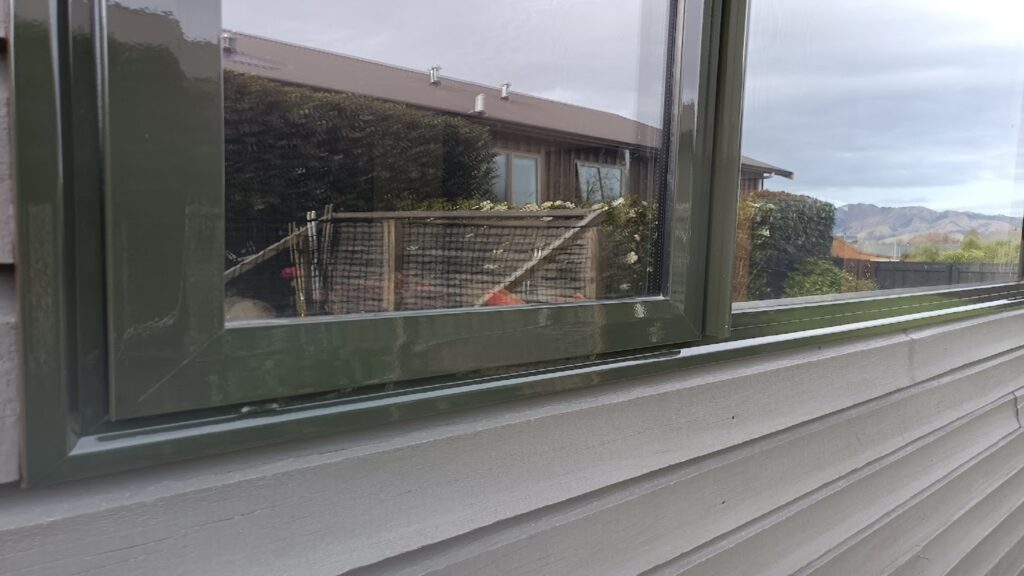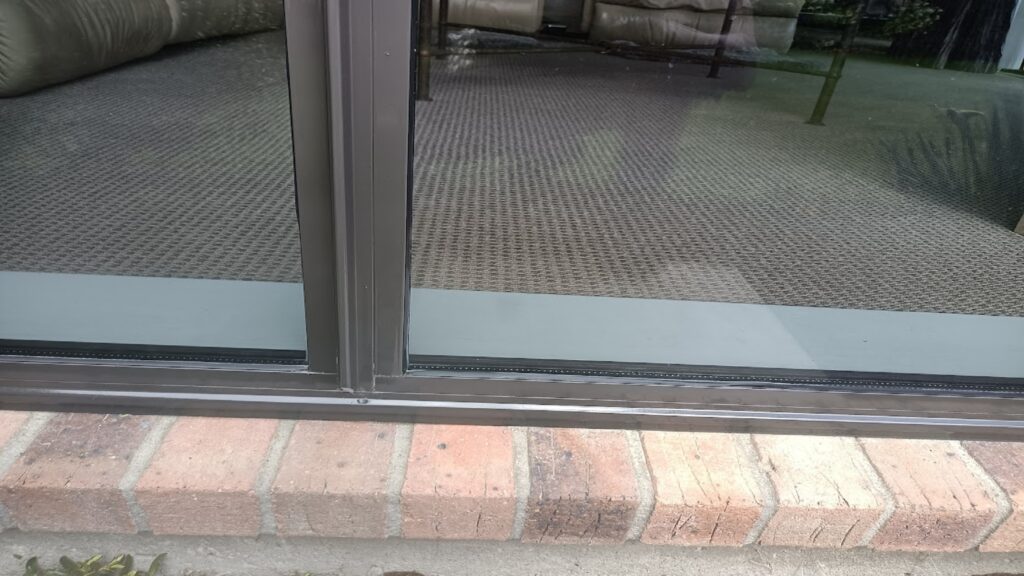Keep window sills dry is crucial to prevent mold, mildew, and structural damage. Proper sealing around windows is the first step in ensuring moisture does not seep through. Use moisture-absorbing materials such as silica gel packs or dehumidifiers to reduce humidity levels indoors.
Regular inspections help identify and address leaks or cracks that might let water in. This practice not only safeguards your windows but also enhances the overall health of your living environment. By implementing these measures, you can effectively keep your window sills dry and maintain a safe and comfortable home.
Common Causes Of Moisture
Keeping window sills dry is essential for maintaining a healthy and safe home environment. Moisture on window sills can lead to mold, mildew, and even structural damage. Understanding the common causes of moisture is the first step toward prevention. This blog post will explore two primary causes: poor insulation and condensation issues.
Poor Insulation
Poor insulation can be a significant cause of moisture on window sills. Inadequate insulation allows cold air to seep into your home. This can create a temperature imbalance around your windows. Cold air meeting warm air can result in condensation. This condensation then drips onto the window sills, causing moisture buildup.
Here are some common signs of poor insulation:
- Drafts coming from the window area
- Cold spots near the windows
- High energy bills due to extra heating or cooling
Improving insulation can help. Consider these solutions:
| Solution | Benefit |
| Install weatherstripping | Prevents drafts and seals gaps |
| Use insulated curtains | Helps maintain indoor temperature |
| Upgrade to double-pane windows | Reduces heat transfer |
Condensation Issues
Condensation is another common cause of moisture on window sills. When warm, moist air comes into contact with a cold surface, it turns into water droplets. These droplets can accumulate on window sills.
Several factors contribute to condensation:
- High indoor humidity levels
- Poor ventilation in rooms
- Cold weather outside
To reduce condensation, follow these tips:
| Tip | Explanation |
| Use a dehumidifier | Reduces indoor humidity levels |
| Improve ventilation | Allows moist air to escape |
| Keep windows slightly open | Promotes air circulation |
By addressing these issues, you can keep your window sills dry and prevent damage.
Effective Sealing Techniques
Keeping window sills dry is very important. Wet window sills can cause mold and damage. Effective sealing techniques can help stop water from getting in. In this guide, learn how to use weather stripping and caulking to protect your window sills.
Weather Stripping
Weather stripping helps block out water, wind, and cold air. It is a simple and effective method to keep window sills dry. There are different types of weather stripping materials. Some common options are foam, felt, and rubber. Each type has its own benefits.
Foam weather stripping is easy to install. It comes in a roll with a sticky back. Cut the foam to the right length. Then, press it into place. Foam works well for small gaps.
Felt weather stripping is also easy to use. It is soft and flexible. Felt is good for narrow spaces. It can be stapled or glued into place.
Rubber weather stripping is more durable. It is great for larger gaps. Rubber can handle more wear and tear. It usually comes in a strip. Stick it to the window frame for a tight seal.
Benefits of Weather Stripping:
- Easy to install
- Affordable
- Effective at blocking water
- Reduces energy costs
Caulking Gaps
Caulking is another important technique to keep window sills dry. It fills the gaps where water can seep in. Caulking is usually done with a caulk gun. There are different types of caulk. Some are better for indoor use, while others are for outdoor use.
Silicone caulk is a popular choice. It is waterproof and flexible. Silicone caulk lasts a long time. It works well in areas that get a lot of rain.
Acrylic latex caulk is also common. It is easy to apply and clean up. Acrylic caulk can be painted over. It is good for indoor use.
Steps to Apply Caulk:
- Clean the area to remove dirt and old caulk.
- Cut the tip of the caulk tube at a 45-degree angle.
- Load the tube into a caulk gun.
- Hold the gun at a 45-degree angle to the gap.
- Squeeze the trigger to apply caulk evenly.
- Smooth the caulk with a wet finger or tool.
Benefits of Caulking:
- Prevents water damage
- Improves energy efficiency
- Easy to apply
- Long-lasting protection
Window Maintenance Tips
Keeping window sills dry is important for your home. Wet window sills can cause damage. They can also lead to mold. Dry window sills help keep your home safe and clean. Here are some tips for window maintenance.

Regular Cleaning
Regular cleaning helps keep window sills dry. Dirt and dust can trap moisture. This can make window sills wet. Cleaning every week is a good idea.
- Use a soft cloth to wipe the sills.
- Use a vacuum to remove dirt and dust.
- Use a mild cleaner for tough spots.
It is important to dry the window sills after cleaning. A dry cloth works well. Make sure no water is left behind. This will help keep window sills dry and safe.
Another tip is to open windows often. Fresh air can dry out moisture. This is especially useful after cleaning. It also helps reduce mold growth.
Check For Leaks
Checking for leaks is very important. Leaks can make window sills wet. Water can come from outside. It can also come from inside your home.
- Look for cracks around the window.
- Check the seals on the window frame.
- Use a flashlight to see better.
Fix any leaks you find. You can use caulk to seal cracks. It is easy to use and works well. For bigger problems, you might need a professional.
Another tip is to check after it rains. Rain can show where leaks are. If you see water, dry it right away. Then fix the leak.
Keeping window sills dry is easy with these tips. Clean regularly and check for leaks. Your home will stay safe and clean.
Ventilation Solutions
Keeping window sills dry is crucial for maintaining a clean home. Moisture can lead to mold and mildew. Proper ventilation solutions can help prevent these issues. This guide will cover two effective methods: using exhaust fans and opening windows.
Use Of Exhaust Fans
Exhaust fans are great for keeping window sills dry. They help remove moisture from the air. This can prevent condensation on windows and sills.
Here are some tips for using exhaust fans:
- Install exhaust fans in kitchens and bathrooms. These areas produce the most moisture.
- Turn on the fan while cooking or showering. This will help keep the air dry.
- Leave the fan on for 15-20 minutes after you finish. This will ensure all moisture is removed.
- Clean the fan regularly. Dust can reduce its efficiency.
Using exhaust fans is a simple way to keep your home dry and healthy. It is effective and easy to implement.
Open Windows
Opening windows is another way to keep window sills dry. Fresh air helps reduce indoor humidity.
Here are some steps to follow:
- Open windows for a few minutes each day. This will allow fresh air to circulate.
- Open windows on opposite sides of the room. This creates a cross breeze and improves airflow.
- Avoid opening windows during rainy weather. This can bring more moisture inside.
- Use window screens to keep bugs out while windows are open.
Fresh air is essential for a healthy home environment. Opening windows is an easy and cost-effective method.
Dehumidifying Options
Keeping window sills dry is important for maintaining a healthy home. Wet window sills can lead to mold growth and other issues. Using dehumidifying options helps to reduce moisture and keep your window sills dry. This blog will explore two effective methods: portable dehumidifiers and absorbent materials.
Portable Dehumidifiers
Portable dehumidifiers are great for reducing moisture in specific areas. They are easy to move and can be placed near windows.
Here are some advantages:
- Easy to use: Just plug them in and turn them on.
- Effective: They remove a lot of moisture from the air.
- Portable: Move them to where they are needed most.
There are different types of portable dehumidifiers. Some are small and compact, while others are larger and more powerful.
Here is a quick comparison:
| Type | Size | Capacity |
| Small | Compact | Up to 20 pints/day |
| Medium | Moderate | 20-30 pints/day |
| Large | Bulky | Over 30 pints/day |
Small dehumidifiers are best for small rooms or single windows. Medium units work well in larger rooms. Large dehumidifiers are ideal for basements or very damp areas. Choosing the right size ensures optimal moisture control.
Absorbent Materials
Absorbent materials are another simple way to keep window sills dry. These materials can be placed directly on the window sill to soak up moisture.
Here are some common types:
- Silica gel packs: Often used in packaging, they absorb moisture well.
- Clay desiccants: Made from natural clay, they are effective and eco-friendly.
- Calcium chloride: Often used in moisture absorbers, very efficient.
Using absorbent materials is easy. Place them on the window sill or in a container nearby. Replace them when they become saturated.
Here is how often you may need to replace them:
| Material | Replacement Frequency |
| Silica Gel | Every 2-4 weeks |
| Clay Desiccants | Every 4-6 weeks |
| Calcium Chloride | Every 1-2 weeks |
Silica gel packs are small and easy to hide. Clay desiccants are reusable and eco-friendly. Calcium chloride is very powerful but needs frequent replacement. Choosing the right absorbent material depends on your needs and preferences.
Conclusion
Maintaining dry window sills is essential for a comfortable home. Regular cleaning and proper sealing can prevent moisture buildup. Use dehumidifiers to control indoor humidity. Check for leaks and repair them promptly. By following these tips, you’ll ensure your window sills stay dry and in great condition year-round.

